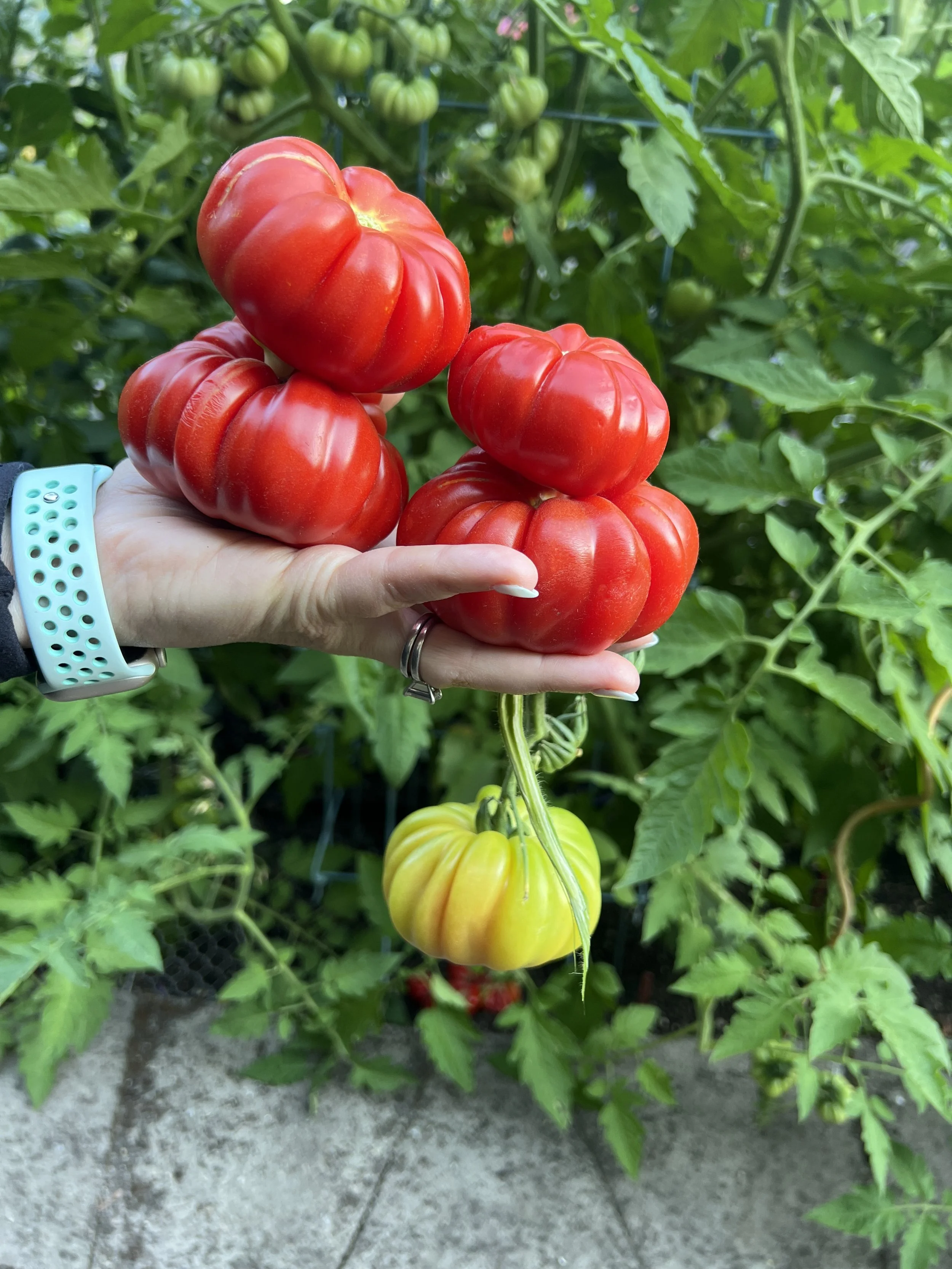Growing Tomatoes
Tomatoes (swoon) are my favorite edible to grow. Each year I tend to replace a few varieties, supplementing my favorites with new ones to try! Arguably the most prolific and rewarding crop in our garden, I’ve learned some things along the way that yield reliable results. And they are really fun to make salsa, bruschetta or even tomato jam!
My tips for success
Sow from seed - it is important to me that my edible food hasn’t been treated with chemicals somewhere in it’s lifecycle, and the only way I can ensure that is to grow my own from seed. I will admit there are other veggies that I purchase from the garden store, but tomatoes are a showpiece in my garden and I love growing them from seed. It also allows me to grow some really unique varieties that just aren’t commercially available. I start all my seeds in January, which works for me in Portland, since I like for my tomatoes to get nice and strong and a foot high when I transplant them to the garden in May. I sow inside and eventually promote the little plants to my greenhouse, where they are up-potted for another few months before transplant.
Up-pot with nutrition - as the seedlings outgrow their first container, I up-pot them once, maybe twice, before transplanting time. And each time to do, I add nutrients. Tomatoes are heavy feeders and you want to keep them thriving as they work their way to transplant.
Transplant protocol - at time of transplant I dig a hole deeper than the current plant depth and thoroughly water the hole and add some nutrients (remember tomatoes are heavy feeders!). I then set the plant deeper in the soil, up to or covering the bottom row of leaves. Tomato plants can send more roots out along the stem, and setting them deeper in the soil allows for more roots, plant stability, and intake of nutrients. I add plant supports at the time of transplant too, to bolster the plants as they grow and avoid disrupting the roots later.
Automatic watering - for the first few years I did not have automatic watering set up and hand-watered my entire veggie garden. In the heat of summer, my husband and I would work in tandem, and it still took 45 mins - twice a day! While our tomatoes did okay, switching to automatic watering was a game changer. The plants did soooo much better with reliable and consistent watering and I’ve had no issues with blossom rot since.
Attract pollinators - to maximize your yield, you need pollinators! Adding more flowering plants in or near your tomato plants will really attract bees and flies to visit and pollinate, encouraging lots of fruit.
Beds not bags - for the first few years I would plant over 20 tomato plants in our garden, necessitating grow bags to supplement our garden beds. The plants in grow bags never had the same yields as those in beds and always seemed to struggle with fluctuating temps and water consistency. I found that if you want good yields, tomato plants just do much better in beds or in ground.
Plant surplus - we have a very diverse habitat, with little critters that enjoy the garden as much as we do. To ensure a large enough crop for my own needs, I plant more tomato plants than I need, allowing for chipmunks to also have their fill.






